Omega Seamaster Planet Ocean: A Modern Design Icon
by Raman Kalra
Raman Kalra is the founder of The Watch Muse blog and has kindly agreed to share some of his articles with us here on Quill & Pad.
________________________.
The Omega Seamaster Planet Ocean is just another great watch in the Omega collection. Visit any Omega boutique and there will be several on display in multiple colors and with various complications. We know what it looks like and we all expect new iterations – it is the Planet Ocean after all. But, that is the thing. There is nothing unexpected with what I just said, and whether or not you are a fan of the watch, the Planet Ocean has become another staple in the world of watches
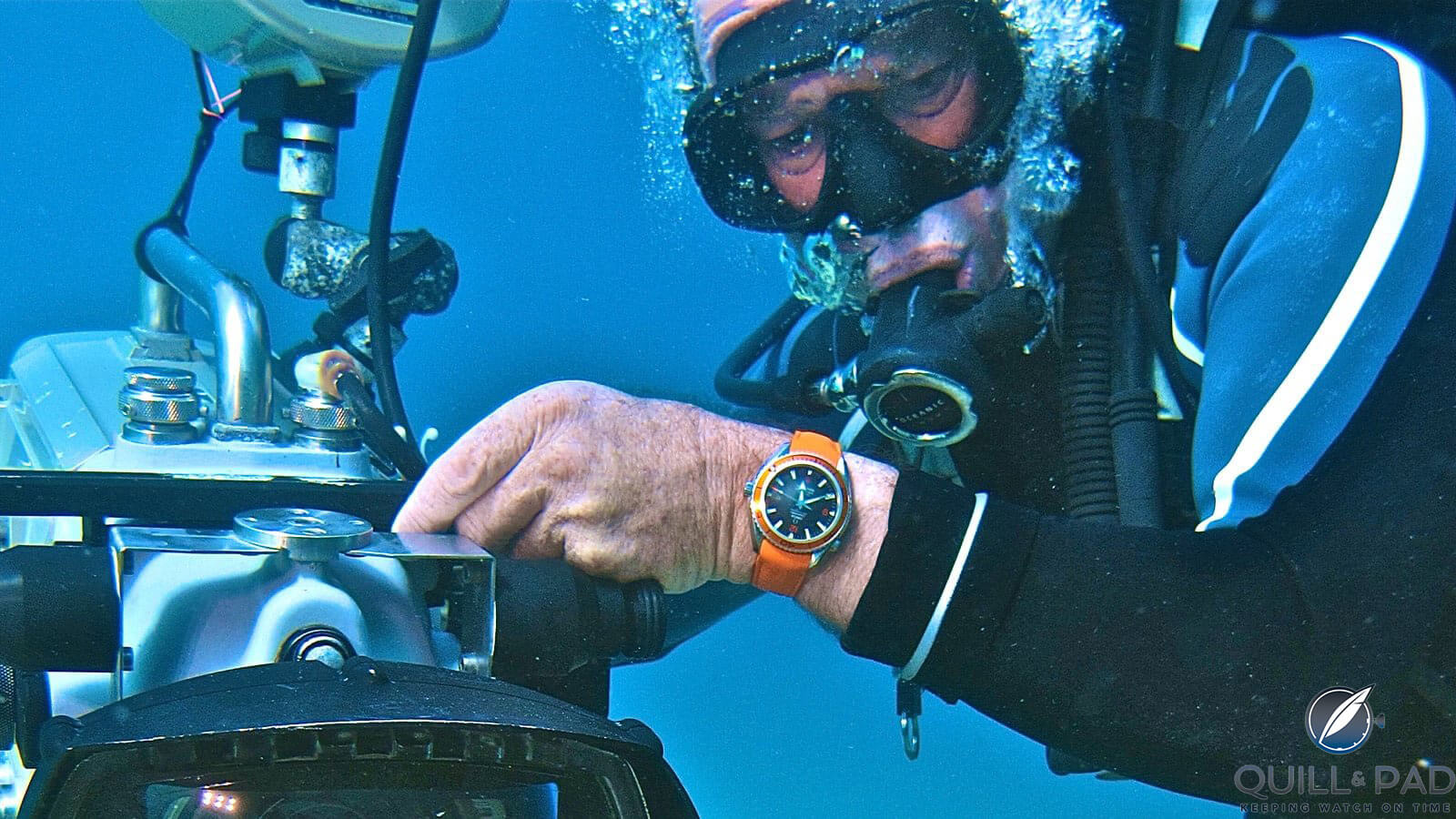
Omega Seamaster Planet Ocean on the wrist
We need to take a step back and recognize what an achievement that is!
The Planet Ocean only first emerged in 2005, and in less than 20 years has gained this status. Omega accomplished something that not many do. I will go out on a limb here and say that the Omega Planet Ocean is one of, if not the most iconic modern designs and range. Using the 10 principles of good design according to Dieter Rams, we will see how the Planet Ocean is just that by definition.
Are there any other watches that can compete for this title? Before that, we need to understand how the Planet Ocean came to be.
Brief History
The Seamaster has been a line in the Omega collection since 1948. As wristwatches became more prevalent at the start of the 1900s, they were being used as tools in many different situations such as the military or by explorers and the demand for water-resistant timepieces grew. Rolex was the first to develop a waterproof case, the Oyster case, in 1926, but Omega took things a step further with the Seamaster. They decided to look towards submarines for inspiration on how to achieve this. It resulted in the Seamaster using a rubber gasket to keep the case sealed at higher depths and various temperatures.
The Seamaster was resistant to 60m – more than anything achieved by other brands at the time.
It is only fitting then that when Omega looked to develop a dive watch that could both compete with the best from Rolex (like the 300m Professional) and go beyond, it would fall into the Seamaster range.
Enter the Seamaster Planet Ocean.
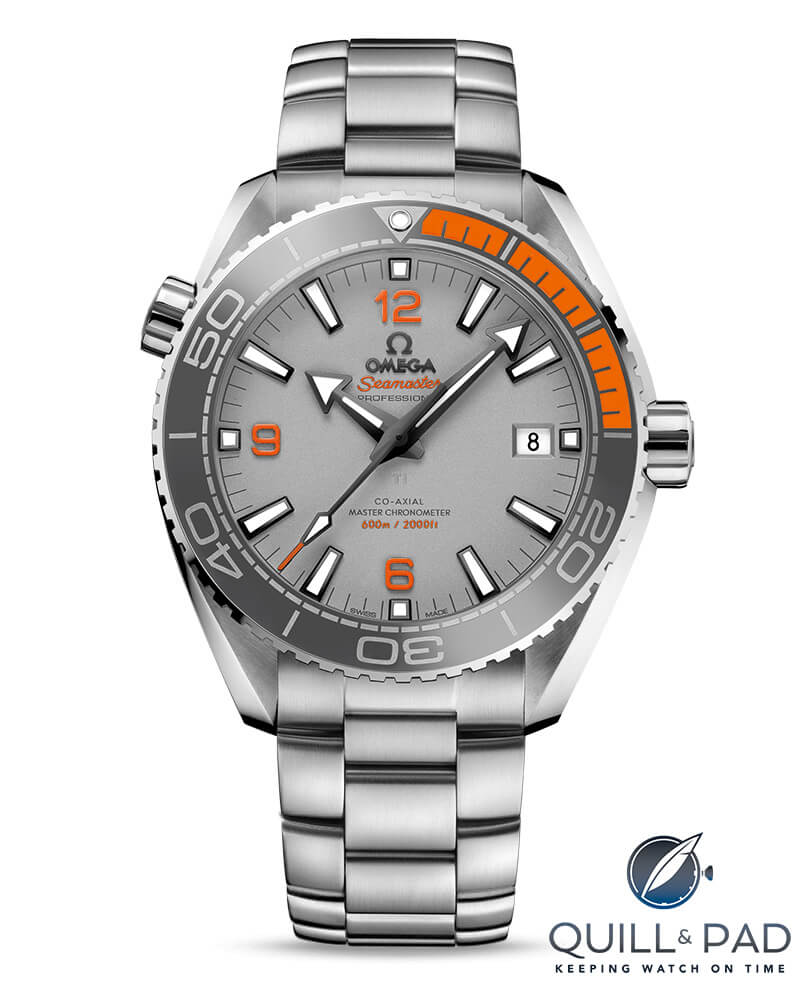
Omega Seamaster Planet Ocean 600m
As this was going to be something new for the brand, they were able to design everything from the bottom up. Previously, the 300m Professional was viewed as a luxury timepiece competing with the Rolex Submariner, but they intended for the Planet Ocean to be more focused. It was going to be the product for diving professionals.
Omega did not disappoint. First launched in 2005, the Planet Ocean held a very modern, sporty style that we still know today and had a depth rating of 600m. Since then, there have been several iterations and updates, but the design and general form factor have remained. It now holds a firm place in the Omega collection and among watch enthusiasts.
The Modern Seamaster Planet Ocean
The last time we saw a meaningful change to the Planet Ocean range was in 2016. The Planet Ocean follows in the footsteps of other iconic watches as updates are more iterative than anything else. With the new third generation in 2016, the most noticeable difference was the case sizes.
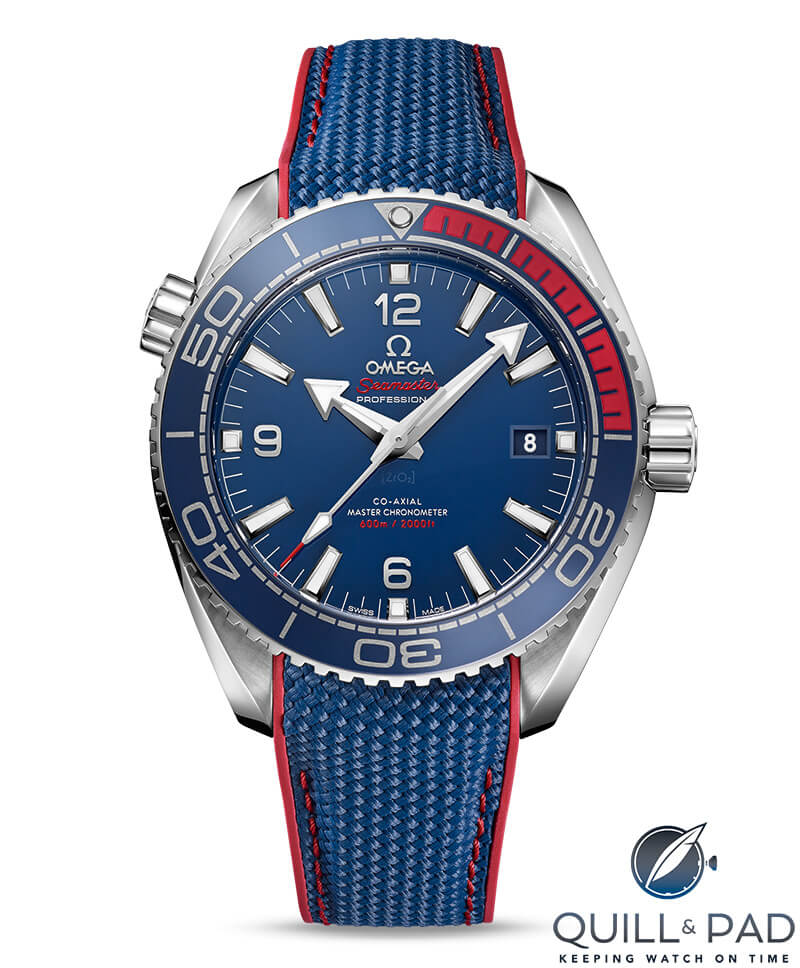
Omega Seamaster Planet Ocean 600m blue
Omega decided to go with a 39.5mm and 43.5mm case while removing the 37.5mm and 45.5mm cases. This was a simplification of the lineup and what I imagine to be an educated decision as the 37.5mm was too small and thick, and the 45.5mm was too large for how watch tastes have been trending. Omega upgraded the movement and added the METAS-certified caliber 8900 to the Planet Ocean.
Movements that are certified by METAS are accurate to 0/+5s per day and withstand 15,000 Gauss. This goes beyond the standard set by COSC and highlights the extent of engineering that Omega puts into its movements. There were other minor updates including an improved bracelet allowing the watch to sit better on the wrist, a wider micro-adjustment range to 9.6mm in five different positions and, away from the bracelet, and a new rubber strap.
On the dial, the minor refinements continued with applied Arabic numerals and a refreshed minute track. It isn’t a lot, but when updates are iterative, these changes were enough to improve an already strong product. This third generation was all about modernizing the internals, simplifying the sizes on offer and small refinements to the finishing.
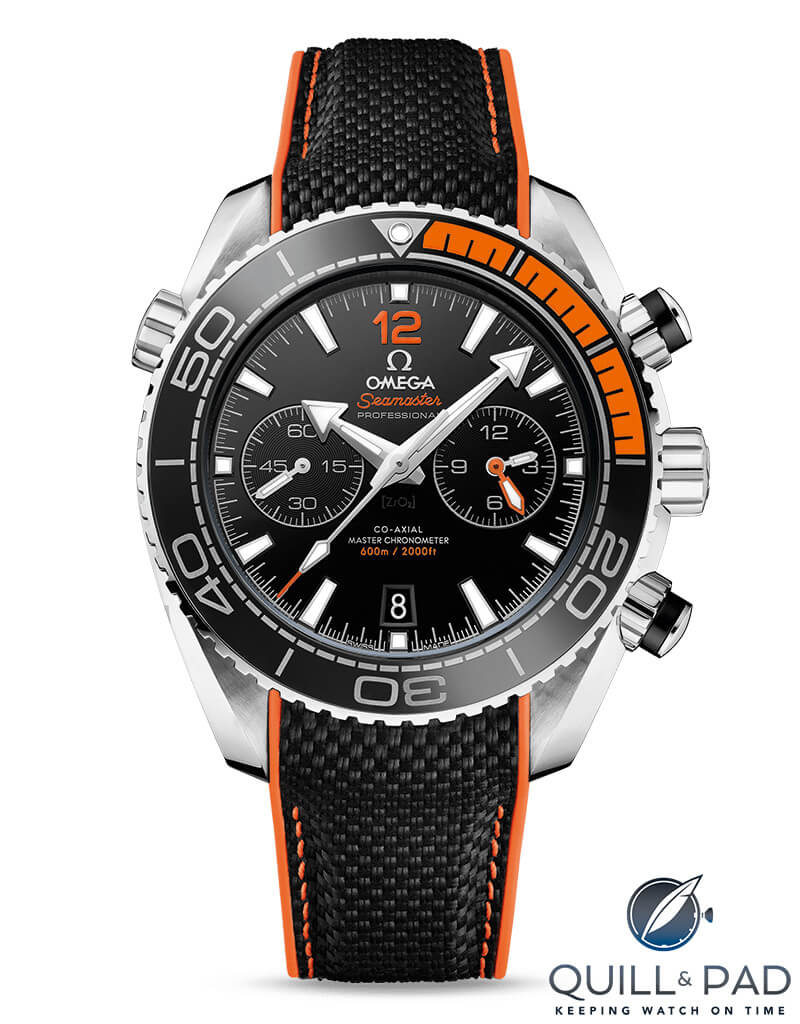
Omega Seamaster Planet Ocean 600m chronograph
Now we know how the Planet Ocean came about and what the latest generational update brought; I want to discuss why it might be the best-designed modern range. In such a short amount of time, there are very few brands that can claim they have achieved what Omega has with the Planet Ocean. I struggle to find a contemporary collection that holds a brand-new name and look, yet is so distinct.
—————————————————————————————————–
—————————————————————————————————–
To try and demonstrate this, I will use the ten principles of good design defined by Dieter Rams. He is a German designer that is best known for his associations with consumer brands such as Braun and Visœ, as well as the functionalist school of industrial design. His philosophy inspired the likes of Jony Ive and several Apple products have been influenced by his designs.
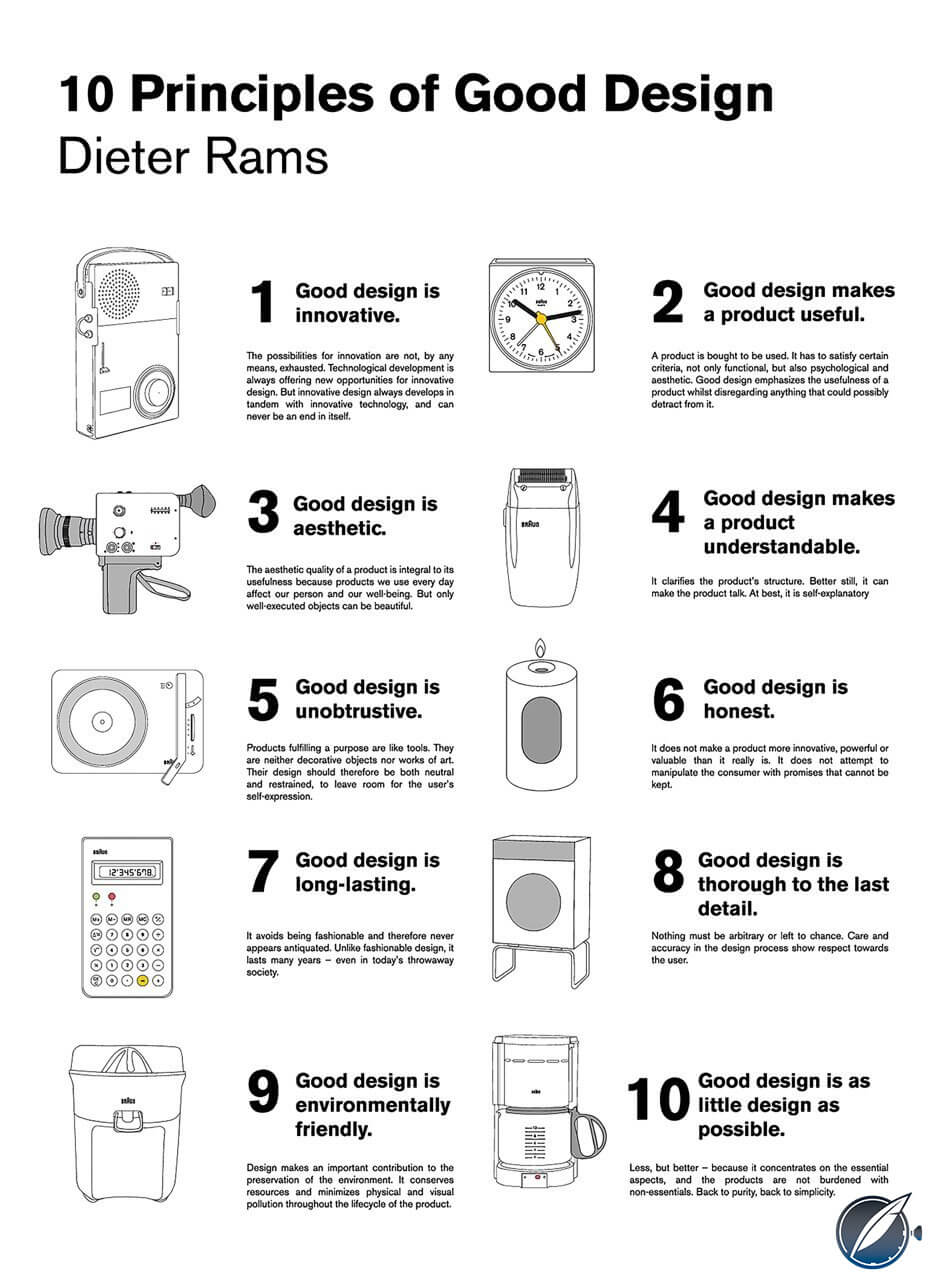
Dieter Rams 10 Principles of Good Design
Beyond just his products, Dieter Rams also developed the ten principles of good design that he used to critique his work.
The ten design principles are as follows:
- Is Innovative
- Makes a Product Useful
- Is Aesthetic
- Makes a Product Understandable
- Is Unobtrusive
- Is Honest
- Is Long-Lasting
- Is Thorough Down to the Last Detail
- Is Environmentally Friendly
- Is as Little Design as Possible
By following the above, I want to try and show that the Omega Planet Ocean is by definition well-designed.
Is Innovative
The first principle is self-explanatory, and I imagine I wouldn’t need to say much here to show the Planet Ocean is innovative, however, I will. The most obvious place to start is the movement. Innovation is abundant in the caliber 8900. This was the first movement to receive an approved certification from METAS. The movement precision is tested in a wider range of scenarios, particularly around the simulation of daily wear. It was first seen in the 2015 Globemaster and made its way to the Planet Ocean in 2016.
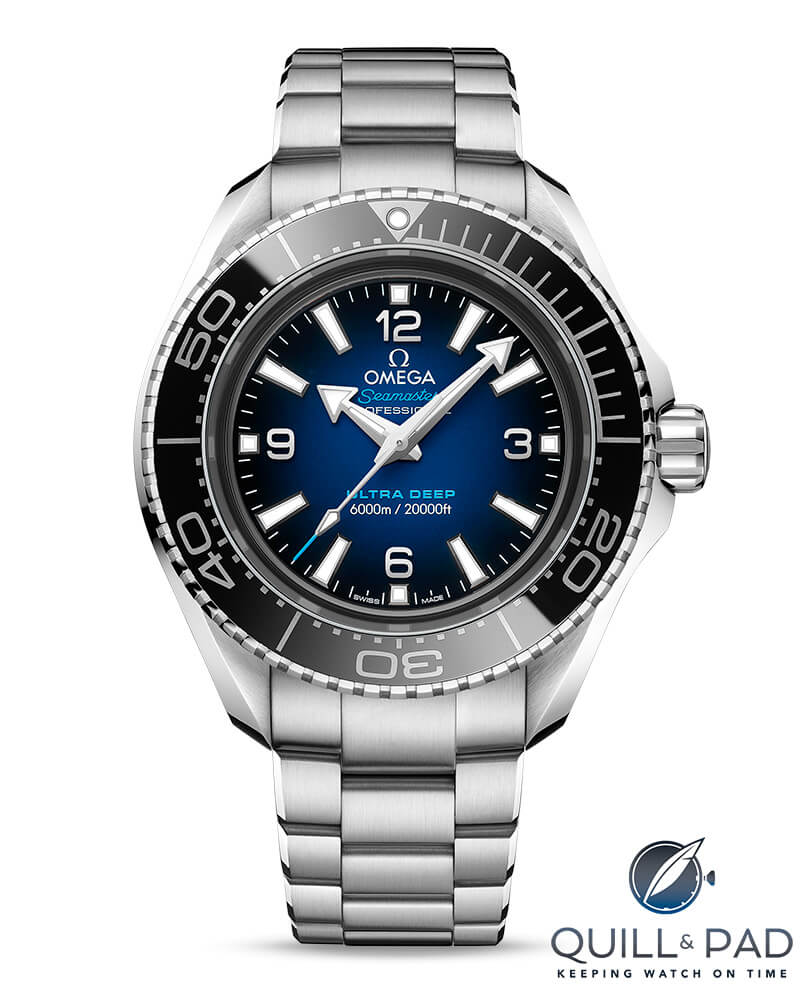
Omega Seamaster Planet Ocean Ultra Deep
A more specific innovation to just the Planet Ocean is the use of Liquidmetal. Material innovation has been a hot topic since the start of the 2000s, and Liquidmetal was Omegas’ answer to Cerachrom from Rolex. Liquidmetal is an alloy made up predominately of Titanium, Zirconium and Copper and has the unique property of being elastic and malleable. When combined with the ceramic used to create the bezel, the Liquidmetal provides further durability as it results in extreme hardness and corrosion resistance.
As the alloy can be manipulated at lower temperatures than ceramic, it can be used to fill in the engraved numerals and minute markers found on the ceramic bezel leading to two different finishings on the end product.
The numerals and markers are brushed and the rest of the bezel has the traditional glossy look we are accustomed to with the use of ceramic. The first Planet Ocean to use Liquidmetal was launched in 2009. That particular reference is one of the most sought-after as it was a limited edition of 1,948 pieces and retained the older, thinner movement.
Makes a Product Useful
The second principle follows the thought that a product is ultimately bought to be used, and good design emphasizes its usefulness. Omega did not forget this with the Planet Ocean. On the contrary, Omega went out of its way to create a useful product. The formula for a modern dive watch is as follows: good water resistance, legibility, luminescence, anti-magnetism, a fixed rotating bezel and more recently, wearability.
Omega made sure all these points were considered. The watch is good for depths of up to 600m (and even more for some variants), Super-LumiNova is used across the indices and bezel, the 8900 movement is non-magnetic up to 15,000 Gauss and, despite its relatively large size, it fits on the wrist well as the lug-to-lug is on the narrower side (like the Seiko Turtle).
Further to this, there are other additions including a Helium Escape Value, a bracelet with a wide micro-adjustment range and an extremely clear dial. This watch, whichever way you look at it, is designed to be a useful diving companion and does not compromise on ability.
Is Aesthetic
The Planet Ocean launched in 2005 and it was nothing like any previous Omega watch. As it was a new model, Omega had free rein over what the watch could look like. There was no heritage tied to the name so they could design a product for the modern world to fulfil its intended use – to be a functional diving tool. Yes, there was some minor inspiration from the 1950s Seamaster 300 ref. 165.024, but at most it uses Arabic numerals and a clear minute track.
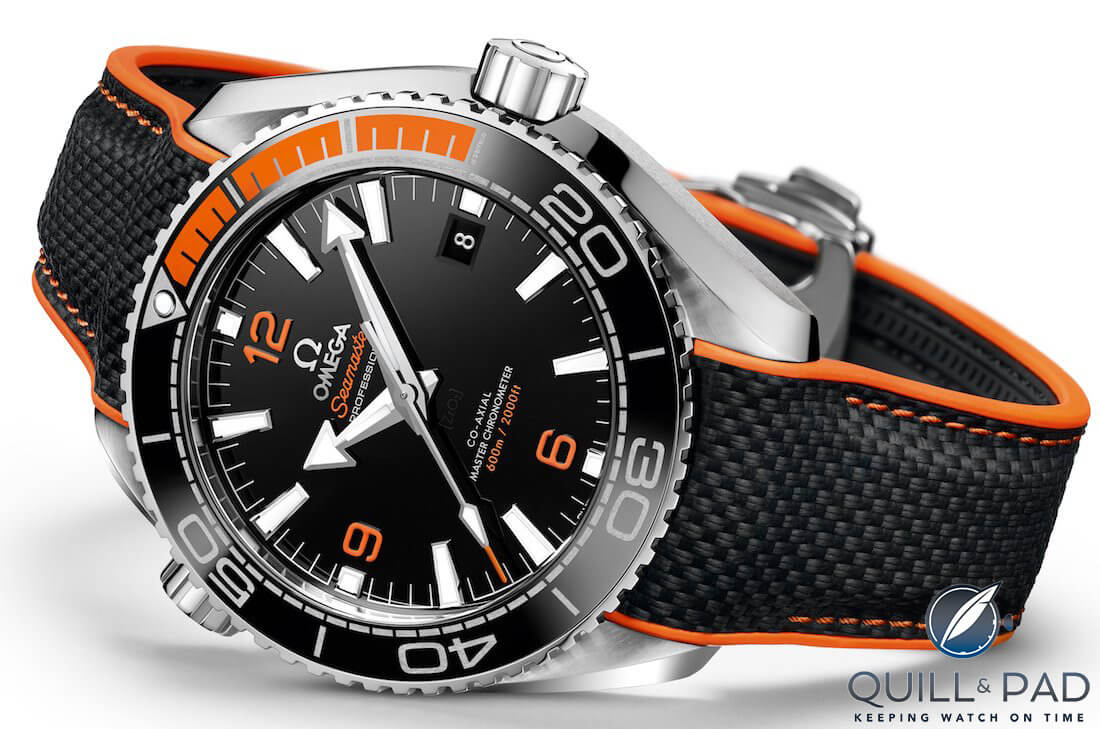
Omega Seamaster Planet Ocean Third Generation
Somehow the package Omega put together looks as contemporary today as it did nearly 20 years ago. It was so good in fact, they did not feel the need to change it from day one. On top of that, Omega incorporated the use of orange through the different models, with some even featuring fully orange bezels. This distinct shade and color choice has become synonymous with the range. The overall aesthetic does not just look good, but it is so distinct that you can recognize it across the room.
Makes a Product Understandable
Does the design make the product self-explanatory? Yes. The Planet Ocean is built for a purpose and this goes hand-in-hand with point two on whether the product is useful. In terms of being understandable, this can be seen in a few different areas.
Firstly, the dimensions – this is a hefty watch with a 43.5mm diameter case measuring 16.1mm thick. The thickness is 1mm more than the Rolex Sea-Dweller.
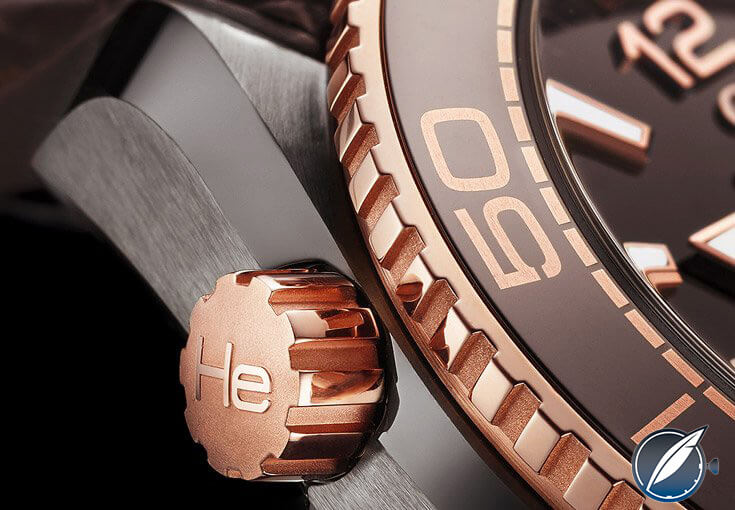
Omega Seamaster Planet Ocean helium escape valve
Secondly, there is the Helium Escape Valve and this indicates the watch is ready and expected to go below 100m. Finally, the legibility and color-use signal that the Planet Ocean can be seen in dark environments i.e., underwater. This watch is designed as a functional tool and the look is defined by this.
—————————————————————————————————–
—————————————————————————————————–
Is Unobtrusive
Technically, the Planet Ocean has a strong wrist presence, and therefore, if you are wearing a suit you could consider it obtrusive. However, the collection is not an ostentatious one. It does not focus on gold variants like the competition. A quick calculation looking at all watches for sale on Chrono24 since the launch shows that 72% of Planet Oceans are stainless steel and only 6% are gold (including yellow gold, rose gold and two-tone). In contrast, the Rolex Submariner for those same years shows 69% are stainless steel, but the other 31% are gold variants.
Even if you look at the gold Planet Ocean models, they are more restrained. The use is subtle as it primarily is found on just the case as the strap options tend to be either rubber or leather. Buying a gold Planet Ocean is not the same as buying a gold competitor (even from Omega). The remaining materials available on the Planet Ocean come from ceramic and titanium, and again these are less showy. The watch is left to fit around you rather than standing out and drawing great attention.
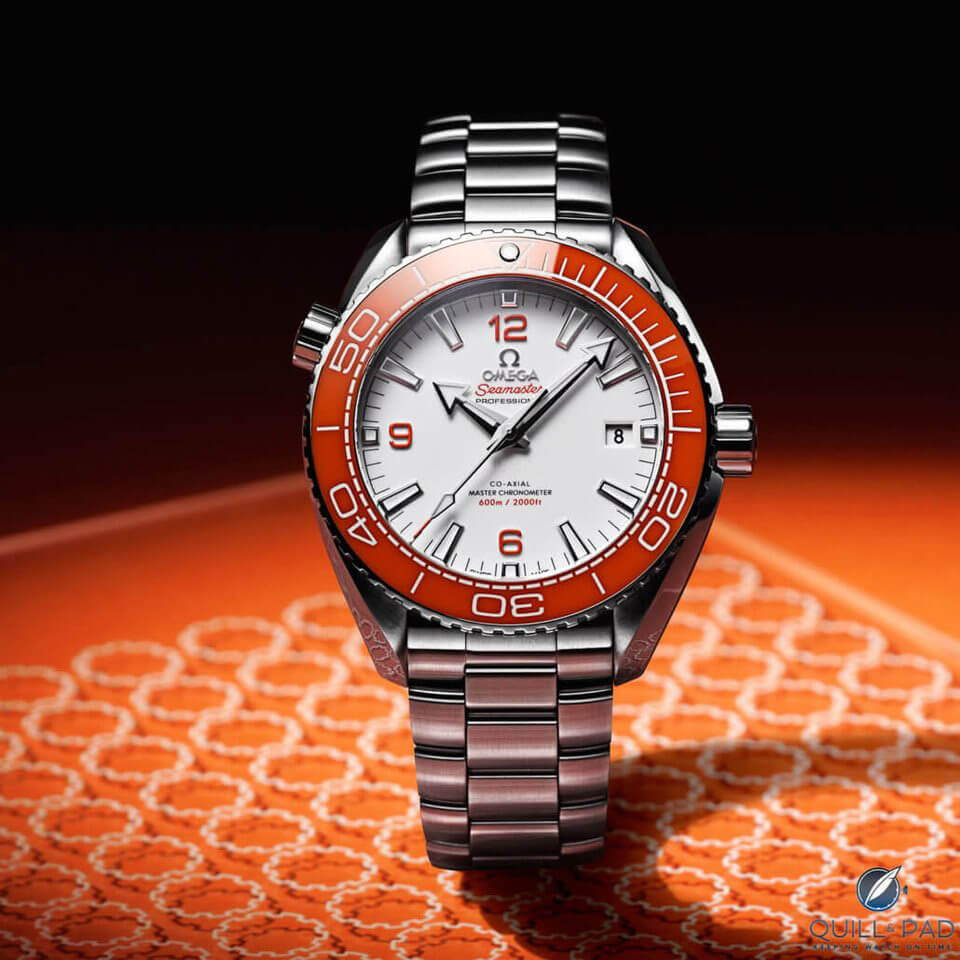
Omega Seamaster Planet Ocean
Is Honest
This one is a bit tougher to draw from the Planet Ocean, but mainly because this principle states that a product must not look more powerful or valuable than it is. How can this be the case for the Planet Ocean? The most obvious answer: it does not try to look like a diver without being one that can withstand serious depths. The best way to demonstrate this is by using examples of where that might be the case e.g., Panerai Luminor Due or even the Oris Divers Sixty-Five.
Both of these watches are designed using dive watch inspiration, however, the Luminor Due has a water resistance of just 30m and the Divers Sixty-Five of 100m. 30m equates to a dress watch and I know those buying a Luminor Due don’t plan on diving, but it is the principle that a dive watch base has been used. The product, therefore, is not honest according to Dieter Rams’ principles. Even 100m water resistance does not correspond to a dive watch and the Oris goes one step further than Panerai by including a rotating bezel. In contrast, the Planet Ocean is one of the best dive watches on the market.
Is Long-Lasting
By the principal definition, long-lasting relates to the aesthetic withstanding the test of time and not conforming to a current fashion. It could not relate more to the Omega. Whilst it looks like a modern watch today, it has not changed much since its first launch and has lasted 20 years without aging. It did not try to follow the trends of the time. It has not seen the use of ‘fauxtina’ (fake patina) and it has not seen functions stripped away in search of meeting current trends. It knows what it is and therefore, avoids being susceptible to people wanting something different.
The biggest challenge it has faced is consumers now want smaller timepieces. However, as a dive watch, it will continue to be future-proof given it is a model of simplicity and subject to only small refinements.
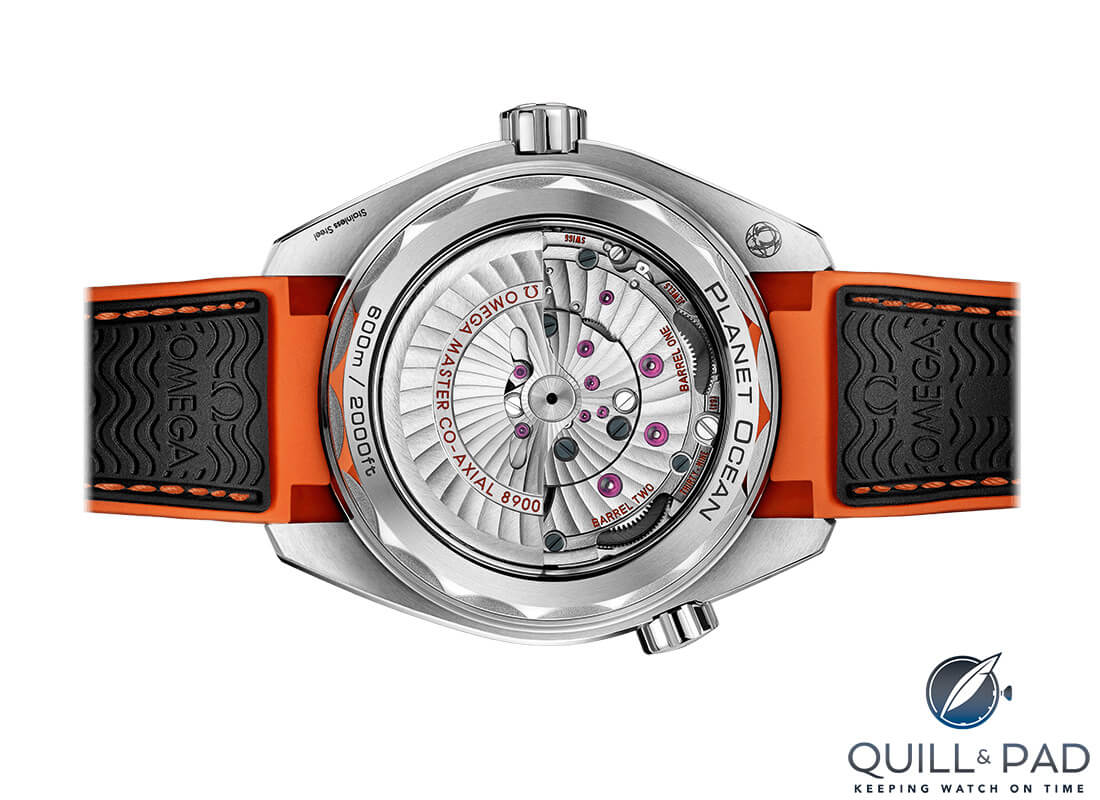
Back of the Omega Seamaster Planet Ocean
I don’t need to say anything more than the caliber 8900 is a fantastic movement and can last forever with the correct care like all mechanical watches.
Is Thorough Down to the Last Detail
The small, carefully thought-through details are what distinguish between a tool watch and a luxury watch. The Planet Ocean is no exception. The case has a nice combination of finishes with a mix of brushed and polished surfaces. The dial is glossy, however, it is just enough that the light is reflected but not too much to draw away from the overall legibility. The broad arrow hands, including the second hand, are beveled down the center. It creates an attractive aesthetic as they catch the light and provide depth to the watch.
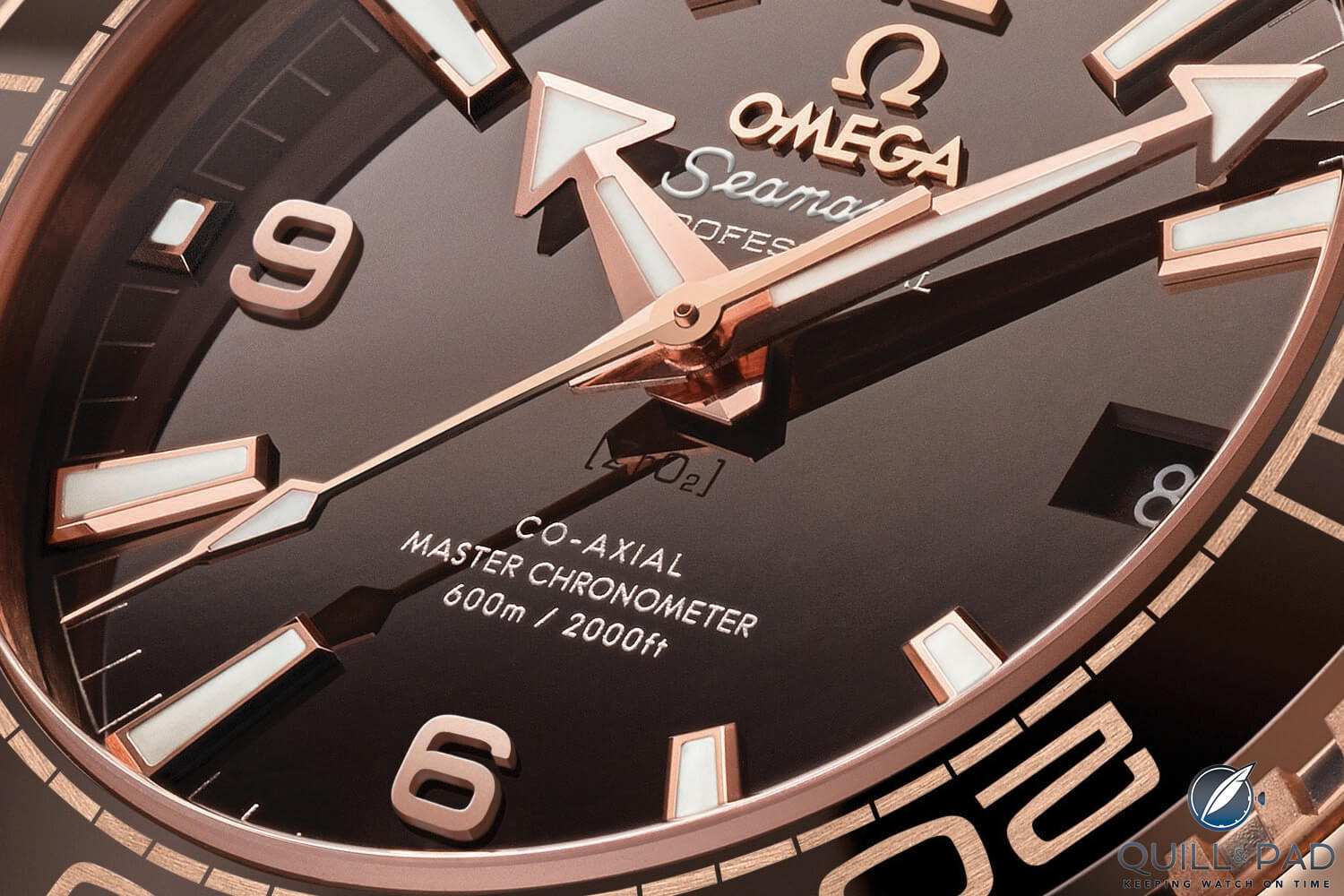
Omega Seamaster Planet Ocean 600m dial
The Omega logo is applied in contrast to the printed logo found on the Seamaster 300m. The indices are strong and visible, filled with lume, but even the indices at the 3-6-9 positions are the same size despite the inclusion of a date window. Then there are all the other details expected of Omega – the movement finishing, the bracelet and strap quality as well as the “He” text found on the Helium Escape Valve.
Is Environmentally Friendly
This is the principle that is hardest to draw across to the Omega. As a brand, Omega follows sustainability ethics and is independently checked by the Responsible Jewellery Code of Practices. As a watch though, it does not have a dial made from ocean plastic like an Oris Aquis, but the Planet Ocean was the watch selected for Omega’s partnership with the GoodPlanet Foundation. This led to the award-winning film ‘Planet Ocean’, which was created to help bring awareness to the health of the sea.
Is as Little Design as Possible
This principle states “less, but better” and I find that the Planet Ocean fits this well. As mentioned previously, the design is all about usability as a dive watch. However, to highlight its simplicity, let us consider what Omega decided not to use.
There is no over-design. The dial does not require any stepped features like the Blancpain Fifty-Fathoms despite being a large watch. The font is clear and not excessive like the Tudor Pelagos. The hands are purposeful and legible – they are not skeletonized for example, which can be harder to see.
The dials are all one solid color with a gloss effect but do not have finishes that could detract from legibility. Everything here revolves around simplicity. Remove the touches of orange and you are left with a relatively dull watch, but that is the point. It is not designed to be jewelry; you are buying a very capable dive watch built to tell you the time clearly.
By following the above principles and being able to cater to each of them, the Omega Seamaster Planet Ocean is technically very well designed. Again, this is not to say there are other watches that don’t fit the principles.
The most obvious one is the Rolex Submariner for example. However, if we look at new ranges coming from watch brands in the last 20 years, it is difficult to think of another that has commanded as much respect as the Planet Ocean.
—————————————————————————————————–
—————————————————————————————————–
Are There Other Watches That Fit This Definition?
I know what you are thinking – there are other watches that fit this definition and you are right. Several watches can fit the ten design principles easily, but the difference with the Omega Seamaster Planet Ocean is that it is a completely modern watch. The other names you are probably picturing include the Rolex Submariner or Daytona, Omega Speedmaster or Seamaster 300m, or Zenith El Primero Chronomaster.
This list goes on, but the difference is all of those watches are based on heritage models. I have taken a long time thinking about this, but it is extremely difficult coming up with a list of modern collections that are as recognizable or iconic as the Planet Ocean in the timeframe.
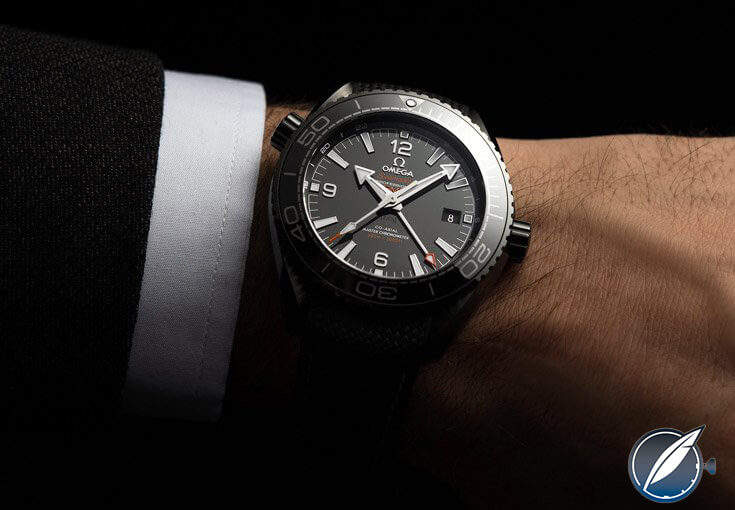
Omega Seamaster Planet Ocean Deep Black
I have found a few examples I want to call out and I will explain why I believe they don’t manage what the Planet Ocean does. Firstly, Tudor – both the Black Bay and Pelagos. The Black Bay I am ruling out straight-away. It might be a modern watch range, but it is very much based on a vintage style. It plays into the recent fashion trends which have helped drive its growth in popularity, but it is not a modern design. The Pelagos is though. I believe this is one of the closest ranges to the Planet Ocean when it comes to design and standing in the watch world.
We know what the Pelagos stands for and it has some interesting, unique styling cues. I believe that with more time, the Pelagos will reach everything the Planet Ocean has achieved, but up to now, it has been somewhat in the shadow of the Black Bay and is still yet to be as recognizable by the general public.
The next example is the Rolex Sky-Dweller. This was a brand new model Rolex launched in 2012 and one of the most complicated in the lineup. It is a coveted model like all Rolex watches, but despite being new, it kept several design details from other ranges. It is very much built upon the Datejust design language and elements such as the fluted bezel and oyster bracelet are nothing new.
The Hublot Big Bang is another range that could be argued in this context given it launched in 2004, although this one is easier to dismiss. It does not fit the ten principles found above – there are areas where design triumphs function. Further, it is very much a design that used inspiration from other watches and even its own history, as well as playing into the fashion of the time. It might be recognizable, but as it does not satisfy the principles, it can’t compete with the Planet Ocean in this context.
Finally, I believe you could argue the case that Richard Mille watches are the most iconic modern design. This I understand, especially as the brand started in 1999 and the first RM-001 Tourbillon came in 2001. They have become ingrained into pop culture at such a rate that I believe they would be identifiable to most. I would argue, however, that Richard Mille is a brand. The design is a whole design language rather than one particular range, and in that sense, it cannot take away from the Planet Ocean being the best-designed modern range.
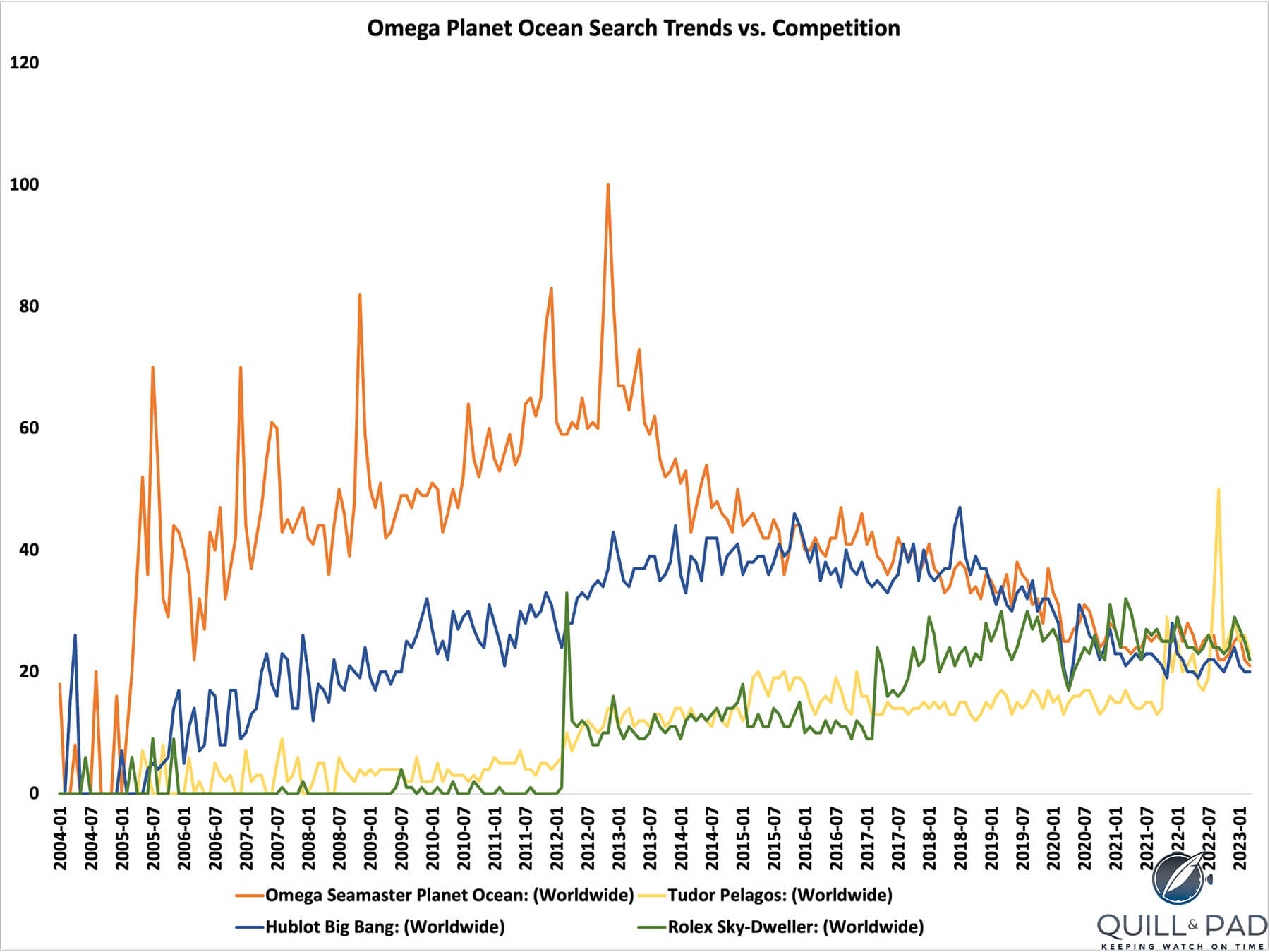
Search Trends showing the initial jump in popularity of the Omega Seamaster Planet Ocean (in orange) on launch
Anecdotally, looking at search trends, none of these watches come close to the instant rise that the Omega Planet Ocean experienced. This was helped in part by the demand for larger watches in the mid-2000s, but even so, the popularity was notable!
Let me know if you think I have missed any more examples of modern ranges that are as iconic as the Planet Ocean.
Conclusion
The Omega Seamaster Planet Ocean is a fantastic watch, and the fact it commanded so much respect in such a short period of time demonstrates how much Omega achieved with it. In doing so, Omega created what I believe is one of the most iconic modern designs – instantly recognizable and (so far) aesthetically timeless.
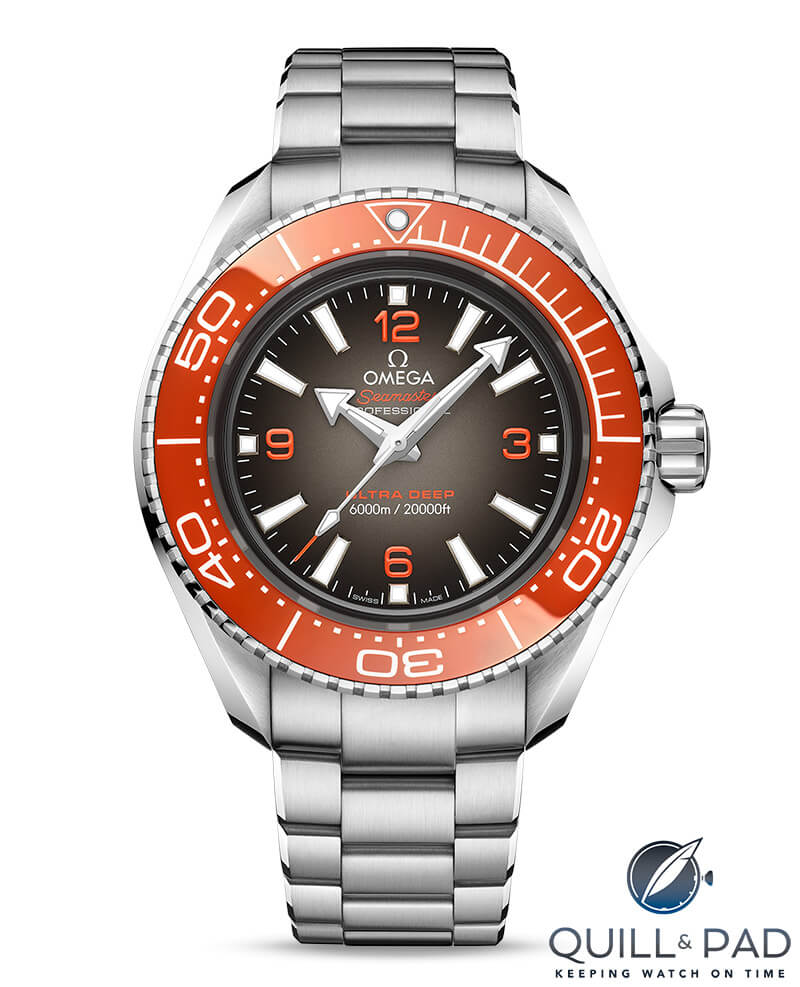
Omega Seamaster Planet Ocean Ultra Deep
Using the ten principles of good design as defined by Dieter Rams, it can be seen that by definition the Planet Ocean is well designed. Taking this a step further and considering other potential contenders for this title, it becomes easier to see just how impressive the Planet Ocean really is. This is without mentioning its capabilities, finishing and movement.
If you are in the market for a timeless yet capable dive watch, the Planet Ocean should be on your list.
For more information, please visit www.omegawatches.com/watches/seamaster/planet-ocean/catalog
Technical details: Omega Seamaster Planet Ocean 6000M Ultra Deep
Functions: Hours, minutes, seconds, second time zone
Case: stainless steel, ceramic bezel, helium escape valve
Dimensions: 45.5 mm x 18.1mm thick
Movement: Omega Co-axial Master-Chronometer Caliber 8912, METAS-certified, automatic winding
Water resistence:6000 meters
Power reserve: 60 hours of power reserve
Price: $13,000
You can read more articles by Raman Kalra at www.thewatchmuse.com.
You might also enjoy:
Omega Aqua Terra: Is it TOO Good?
Blancpain Fifty Fathoms Automatique: Time to Move on From the Rolex Submariner?
Tudor Pelagos 39 mm Thoughts: Blandly Exciting, or Excitingly Bland?
Rolex Submariner vs. GMT Master II: Small Differences, Difficult Decision
Leave a Reply
Want to join the discussion?Feel free to contribute!

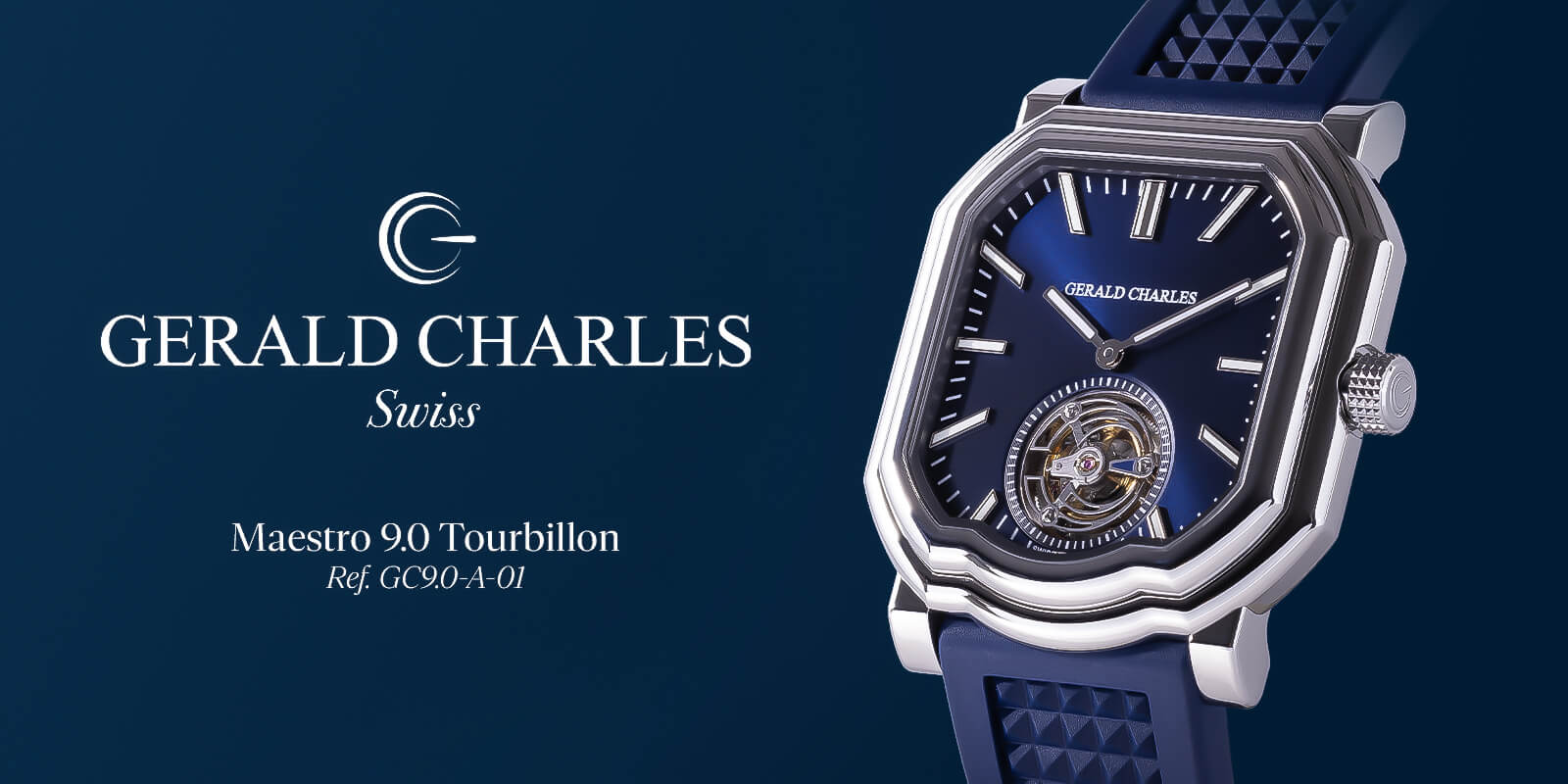
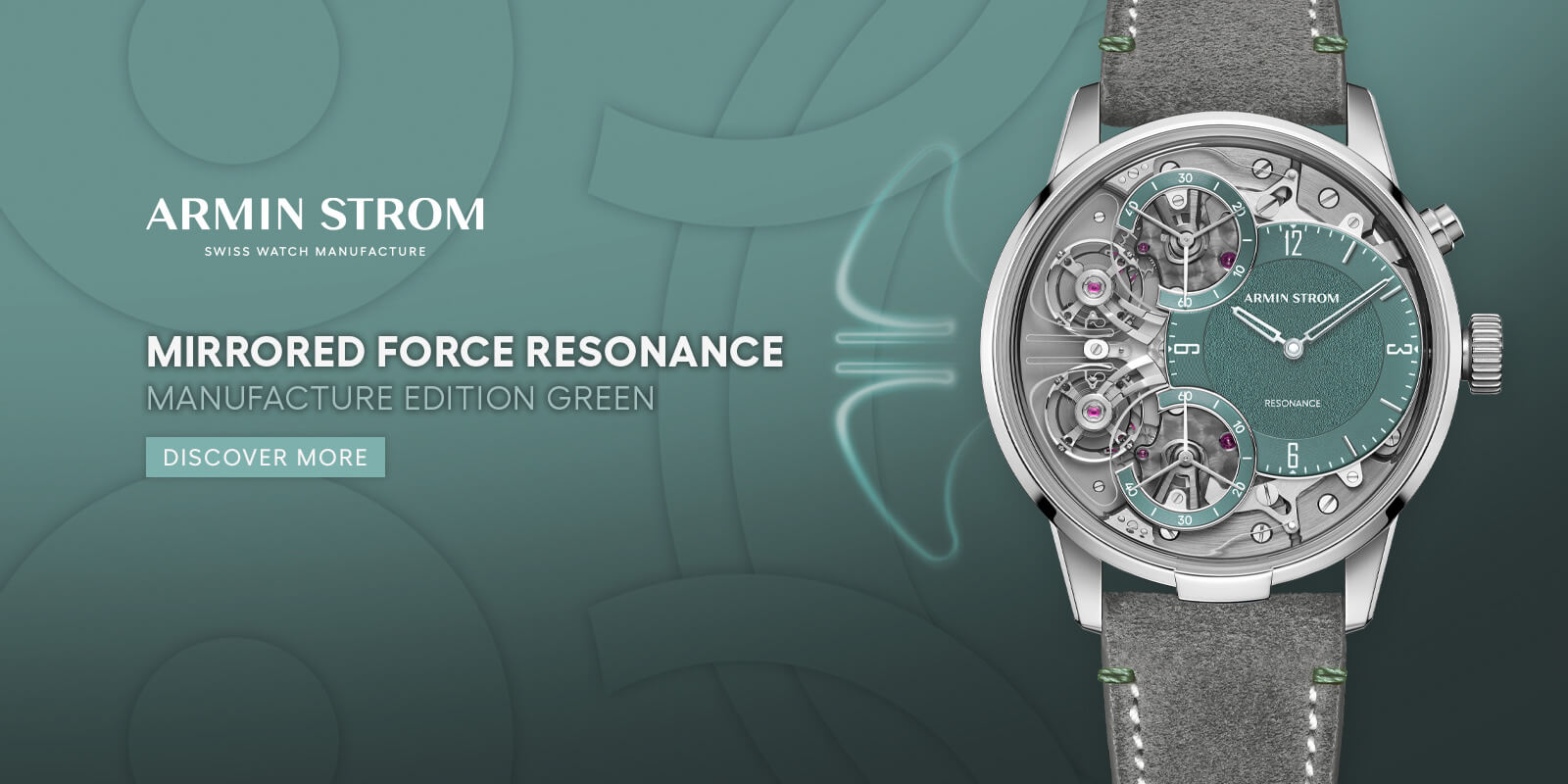
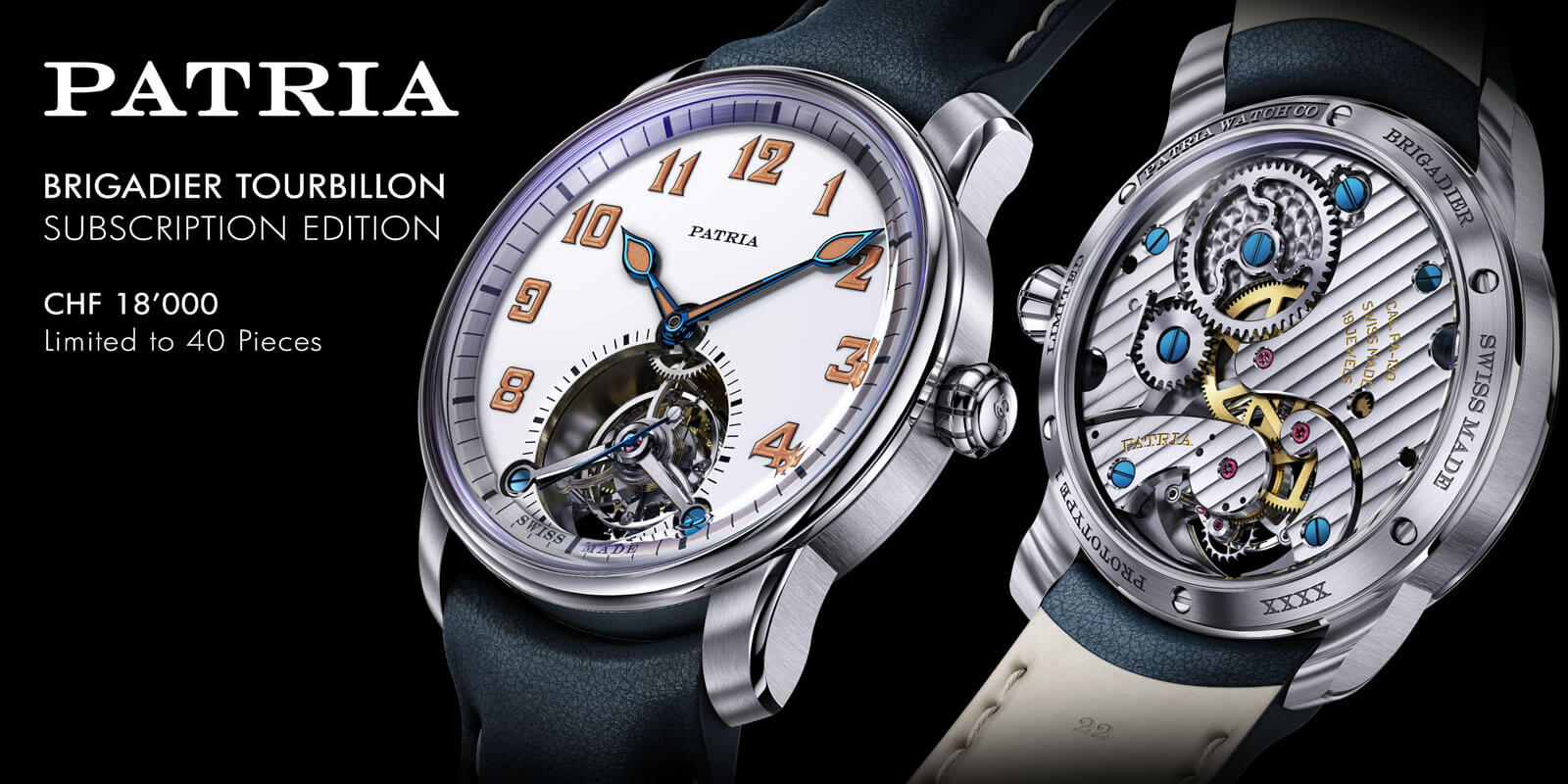


I agree with your assessment. If there was one design change I’ll like to see it will be to have a Planet Ocean model without a date. I think there is beauty in simplicity and a time only model will help to enforce this.
Cheers